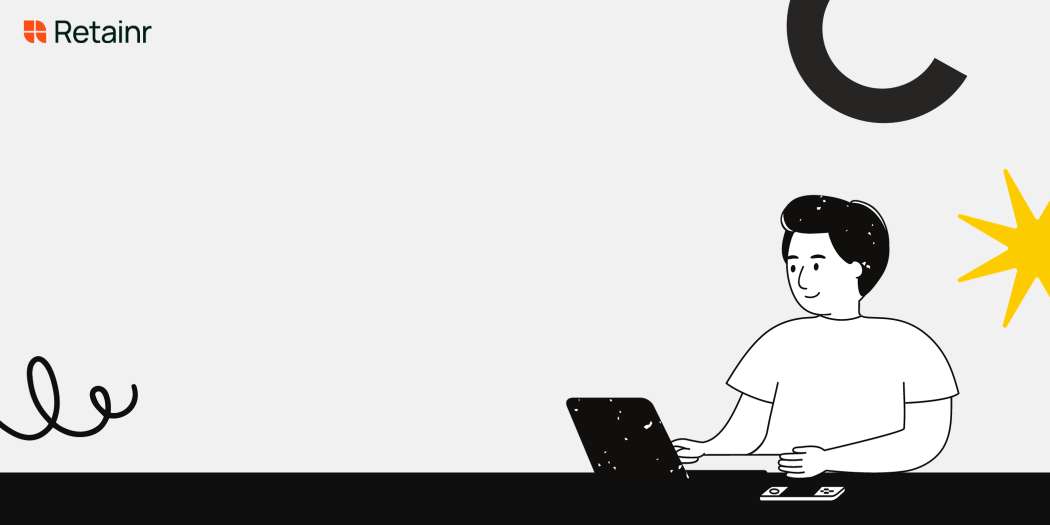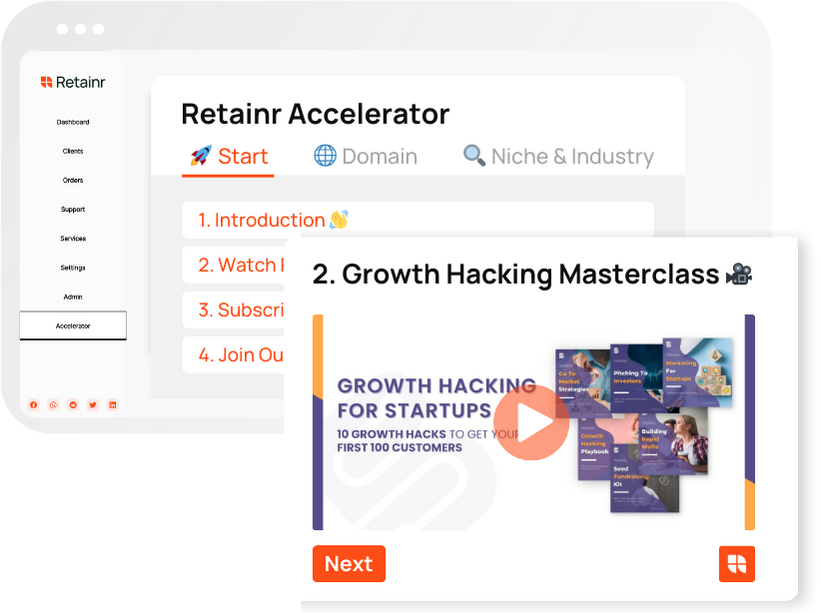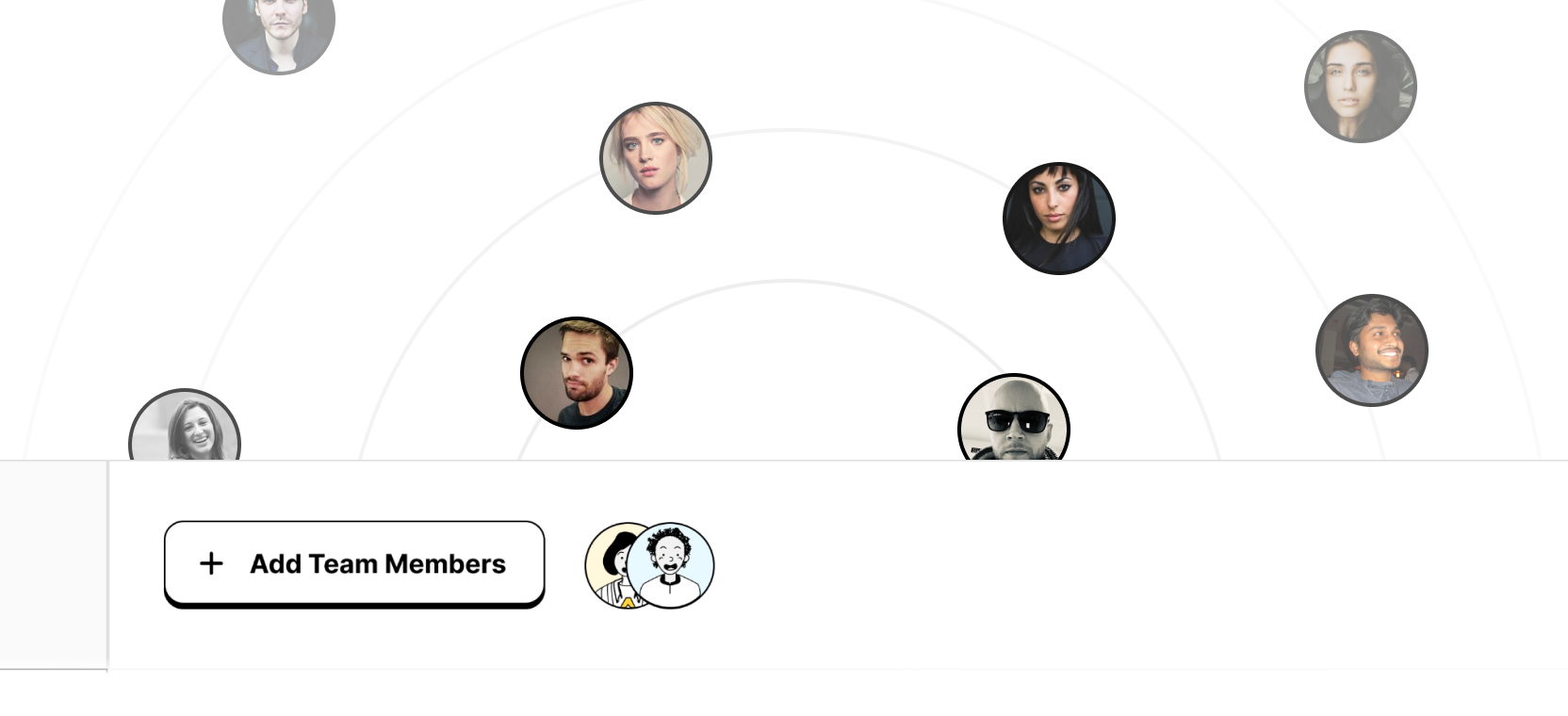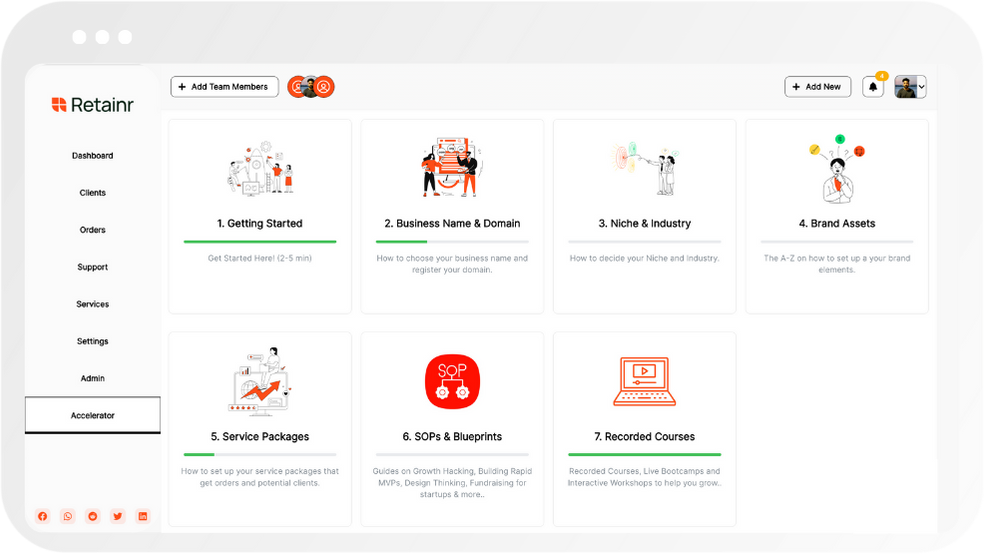
How to Self Publish a Book in 7 Steps
Build with Retainr
Sell your products and services, manage clients, orders, payments, automate your client onboarding and management with your own branded web application.
Get Started1. What are 7 steps to self-publish a book?
Step 1: Conceptualize Your Idea and Start Writing
Begin with a clear concept of your book. It's important to have a skeletal idea of your plot or research and jot down your thoughts accordingly. Once your concept is ready, start writing, and consider setting productivity goals to ensure you stay on track.
Step 2: Edit and Proofread
Upon completion of your draft, it's time to polish it. This involves proofreading, editing, and making adjustments. You could do this yourself or hire a professional. Keep in mind that your book should maintain a professional standard to captivate your readers.
Step 3: Design Your Book Cover
A captivating book cover is essential in attracting readers. Consider working with a professional designer who understands your genre and target audience.
Step 4: Format Your Book
Formatting your manuscript correctly is crucial. Here are the aspects to consider:
- Size of the book
- Font style and size
- Spacings and margins
- Headers and footers
- Page numbering
Step 5: Acquire an ISBN
An International Standard Book Number (ISBN) is a necessity for your self-published book. It's an identifier for books, ebooks, tapes, etc., and is required for retail sale.
Step 6: Deciding How You Will Publish
Decide if you want to go digital (eBooks), print, or both. Also, you need to choose the platform(s) for selling your book.
Step 7: Publish and Market Your Book
Finally, when your book is ready, publish it on the chosen platform(s). Following that, it's all up to marketing your book to ensure it reaches the larger audience.
2. How much does it cost to self-publish a book?
Understanding Costs of Self-Publishing a Book
While traditional publishing often includes the cost of editing, design, and printing in their business model, these costs become your responsibility when you choose the self-publishing route. The total cost can greatly vary depending on the quality and finish you want for your book.
Estimating Essential Expenses
When you self-publish, there are several expenses to account for. A breakdown of potential costs may include:
- Professional Editing: Depending on the level of editing required (developmental, substantive, or copy editing), this might range between $500 - $2000.
- Cover Design: A professional cover design can be as little as $100 for premade designs to up to $800 for custom designs.
- Book Formatting: Professional formatting for your book, both print and digital, generally ranges between $100 - $300.
- ISBN: Buying an ISBN (International Standard Book Number) is essential for official copyright. They are usually around $125 each or cheaper if you buy in bulk.
- Print Costs: If you opt for print on demand, this cost can be absorbed by the buyer. Bulk orders can vary, but anticipate spending several hundred dollars.
- Promotion and Marketing: The cost can be as much or as little as you want to put into it. Many authors start with at least $50 for online ads.
Cost Summary by Components
Here's a brief summary in tabular form of the primary expenses involved:
| Cost Component | Price Range |
|---|---|
| Professional Editing | $500 - $2000 |
| Cover Design | $100 - $800 |
| Book Formatting | $100 - $300 |
| ISBN | $125 - $575 |
| Print Costs | Variable |
| Promotion and Marketing | Variable |
3. What is the process for editing a self-published book?
The Initial Editing Process
When self-publishing a book, the editing process is critical to ensure a polished final product. Initially, this involves going through several rounds of self-editing to catch as many mistakes as you can yourself. To assist in this, consider performing a content edit focused on plot, pacing and character development, followed by a line edit to scrutinize sentence structure and word choice. Finally, a copy edit will allow you to check spelling, grammar, and punctuation errors. Using tools such as Grammarly is good, but can never replace human editing.
Working with a Professional Editor
After self-editing, it's wise to hire a professional editor. Freelance editors can be found through networking or online platforms like Upwork. When hiring,
- Ensure they specialize in your genre
- Ask for examples of their previous work
- Negotiate a clear contract including deadlines
Typically, they'll provide feedback on plot, character development, pacing, and syntax. They may also help refine the clarity and tone of your writing.
Proofreading Your Self-Published Book
The final editing step is proofreading. This process will catch any remaining typographical errors, inconsistencies, and minor issues. However, this stage should only commence after all changes and adjustments from the previous edits are incorporated. Here is a handy table to help you remember the main differences among these stages:
| Editing Stage | Main Focus |
|---|---|
| Content Edit | Plot, pacing, characters |
| Line Edit | Sentence structure, word choice |
| Copy Edit | Grammar, spelling, punctuation |
| Proofreading | Small errors, inconsistencies |
4. How can I design an engaging cover for my self-published book?
Conceptualize Your Book Cover Design
The first step to designing an engaging book cover is brainstorming concepts. Ideally, your cover should reflect the content and theme of your book in an intriguing way. Think about the imagery, colors, and styles that would best represent your book's genre and mood. You can draw inspiration from your favorite books in your genre, but remember to create something unique to set your book apart.
Key Elements of a Good Book Cover
A well-designed cover typically contains the following elements:
- A compelling image or graphic
- Typography that's easy to read even in thumbnail size
- A color scheme that's visually pleasing and suitable for your genre
Each of these elements plays a pivotal role in grabbing a reader's attention and enticing them to pick up the book.
Selecting a Book Cover Designer or Tool
| Option | Description |
|---|---|
| Professional Designer | Hiring a professional designer can yield high-quality results if you have the budget for it. A good designer will consider your input and bring your vision to life. |
| DIY Design Software | There are several design tools and software like Adobe InDesign, Canva, or GIMP, you can use to create your book cover. While this method may be budget-friendly, it requires a bit of design knowledge and can be time-consuming. |
| Premade Covers | Several websites sell premade book covers which you can customize with your book's title and author name. These are cost-effective but may not be as unique or personal as the other options. |
Whatever you choose, remember, a book cover is essentially the first impression of your book. A well-thought-through and well-designed cover can significantly contribute to the success of your self-published book.
5. Where can I self-publish my book?
Platforms for Self-Publishing
There are various digital platforms where you can self-publish your book. Distinct online platforms offer different features and royalties. Below are some of the most popular ones:
- Amazon Kindle Direct Publishing (KDP): As one of the largest online marketplaces, Amazon's KDP allows you to publish eBooks and paperback books. You retain the rights to your book and can get up to 70% royalties on sales to customers in the US, Canada, UK, Germany, India, France, Italy, Spain, Japan, Brazil, Mexico, Australia and more.
- Smashwords: This is ideal for publishing eBooks. It offers distribution to major online retailers including Apple iBooks, Kobo, Barnes & Noble, and the Smashwords store itself.
- Lulu: Lulu offers both eBook and paperback book publishing options. It also helps distribute your book to Amazon, Barnes & Noble, and other retailers.
- IngramSpark: Known for its extensive distribution network, IngramSpark offers print-on-demand services and eBook distribution.
Choosing a Self-publishing Platform
Your choice of platform may depend on several factors, so it is important to consider these elements when choosing:
| Considerations | Why It Matters |
|---|---|
| Royalties | Different platforms offer different royalty rates. Ensure you're clear on what percentage of the sales you'll retain. |
| Distribution | Look at the platform's distribution network. Some platforms have more extenesive international reach than others. |
| Fees | Some platforms may have upfront costs, while others may charge transactional fees. Understand the fee structure before publishing. |
Considering Book Formats
Depending on your target audience and the nature of your book, you may want to consider publishing in various formats. Some platforms specialize in eBooks, while others are better for print. Here are some broad categories:
- eBooks: Good for fiction and non-fiction books, especially if you're targeting a digital-savvy audience.
- Paperbacks: Ideal for a broad audience, including readers who prefer physical books.
- Hardcovers: Ideal for gift books, children's books, and premium products.
6. How do I format my book for self-publishing?
Formatting Basics
Formatting your book correctly is a crucial step when self-publishing. The book needs to look professional and have a proper layout. Initially, you need to choose a trim size for your book which is nothing but the physical dimensions of the book. The most common size is 6" x 9". Next, you will need to decide on margins. For a 6"x 9" book, a safe bet would be Top/Bottom/Outside: 0.75" and Gutter: 0.875". Lastly, decide on the font and font size. 12-point Times New Roman or Arial font are the most popular choices among authors.
Formatting the Interior of Your Book
Depending on whether you're writing a novel or a non-fiction book, the interior formatting will vary. Nonetheless, there are certain elements that are common across all types of books:
- Title Page: This is the first page of the book and it should include the title and author's name.
- Copyright Page: The copyright page, normally on the back of the title page, includes the copyright notice, edition information, and ISBN.
- Table of Contents: A table of contents is crucial for non-fiction books. However, it can be useful for novels too, especially if they are long and divided into parts or sections.
- Chapters: Each chapter should start on a new page with the chapter number and title displayed.
Creating a Professional Cover
A cover is the first thing people would see, so it should be eye-catchy and professional. You can hire a professional designer or use a DIY book cover design tool. Here's an example of how a basic front cover might be structured:
| Component | Position |
|---|---|
| Title | Centred in the middle to upper third of the cover |
| Author's Name | Centred towards the bottom of the cover |
| Imagery | Background/blend with the overall design |
7. How do I market and promote a self-published book?
Step 1: Build an author platform
Creating an author platform is one of the first most essential steps of marketing a self-published book. You can achieve this by starting a blog or a website, create engaging content and cultivating your followers on social media platforms. These outlets become your name and brand, making it easier for your audience to connect with you.
- Start a blog or a website on platforms such as WordPress or Wix.
- Develop a social media presence: Actively post on Facebook, Twitter, Pinterest or Instagram about your works.
- Provide regular updates and interact with your followers: Respond to comments and engage in discourse with your audience.
Step 2: Come up with a smart pricing strategy
Your book's price should be strategically set to compete with other books in your genre. Consider offering your book for free or at a reduced price upon release to trigger initial interest.
| Strategies | Description |
|---|---|
| Competitive Pricing | Set your book's price close to similar books in your genre. |
| Introductory offer | Upon release, offer your book for free or at a reduced price to generate interest. |
Step 3: Engage in Book Promotion Services
There are several book promotion services you can use to get your book seen by the largest possible audience. Some are free, while others may require payment.
- Free promotional sites such as Pretty-Hot.com and Awesomegang.com.
- Paid promotional companies like Ereader News Today and BookBub.
- Don't ignore good old traditional press releases and local news outlets to maximize your reach.
8. Can I make a living from self-publishing my book?
Income Potential from Self-Publishing
The potential to earn a significant income from self-publishing your book is absolutely possible, but it's important to set realistic expectations. It's no secret that some self-published authors have found immense success, like E.L James with her 'Fifty Shades of Grey' series. However, the reality is that most self-published authors earn modest incomes.
Factors Affecting Income
There are several factors that can affect your income from self-publishing, including:
- Quality of your book: This includes both content and aesthetic quality.
- Marketing efforts: How well you market and promote your book contributes greatly to its potential success.
- Book Pricing: Setting a reasonable and competitive price can significantly influence sales.
- Book format: eBooks, audio books, and printed books all have different market dynamics and income potential.
Earnings Breakdown
| Book Format | Average Royalties per Book |
|---|---|
| eBook | $2 - $7 |
| Printed Book | $2 - $8 |
| Audio Book | $2 - $7 |
It's crucial to note that these figures are averages and actual earnings can fluctuate greatly depending on multiple factors. Additionally, you should consider the costs of self-publishing, such as editing, book design, and marketing fees in your overall financial planning.
9. How long does the process of self-publishing a book typically take?
Understanding the Timeline of Self-Publishing a Book
The timeframe for self-publishing a book predominantly depends on several factors such as the length of your book, the time you allocate for writing, editing and formatting, and the book design process. Nevertheless, defining a clear timeline can significantly support your self-publishing journey. Here are general time estimates to consider:
- Writing the book: This can take anywhere between 1 to 6 months depending on your speed and daily writing schedule. Professional writers may finish sooner, while less experienced ones may take longer.
- Editing and proofreading: Generally, this can take anywhere between 2 to 3 months. This includes both self-editing and professional editing.
- Book cover and layout design: For a professional touch, many authors hire freelance graphic designers or use self-publishing platforms which can typically take 2-4 weeks.
- Formatting for ebook and print: With modern software tools, this process can be accomplished within a few days but for a beginner, it may take up to a week.
- Distribution and marketing: Planning and implementing your marketing strategy should start early on but intensifies post-publication. This ongoing process lasts as long as you want your book to sell.
Self-Publishing Process: A Timeline In Table Format
To better visualize the estimated timeline for a self-publishing project, see the table below:
| Steps | Time Estimate |
|---|---|
| Writing the book | 1-6 Months |
| Editing and proofreading | 2-3 Months |
| Book design | 2-4 Weeks |
| Formatting for ebook and print | 1 Week |
| Distribution and marketing | Ongoing |
Additional Factors Influencing Your Self-Publishing Timeline
The timeline mentioned above may vary greatly depending on each individual's situation. Factors like whether you decide to hire professionals for certain steps, your personal schedule and commitment, and the feedback or revisions process may extend or reduce the time taken. Therefore, being flexible and patient throughout the entire process is crucial for successful self-publishing.
10. What are the best platforms or websites to self-publish a book?
Top Platforms for Self-Publishing
There are several platforms where you can self-publish your book. Each comes with its unique features, advantages, and disadvantages. The choice of platform largely depends on your specific needs as an author. The following are some of the best platforms for self-publishing:
- Amazon Kindle Direct Publishing (KDP): The largest and most popular platform, Amazon KDP allows you to publish both eBooks and paperback books. It offers a vast audience and generous royalties up to 70%.
- Smashwords: This platform distributes books to major book retailers including Apple Books, Barnes & Noble, Kobo and others. It's a great choice for authors who want maximum distribution for their eBooks.
- Draft2Digital: Similar to Smashwords in terms of distribution, but with an easier-to-use interface and additional tools such as conversion of manuscripts into eBook formats.
- Lulu: A platform that allows publication of print books and eBooks, with the added advantage of offering hardcover versions.
Comparison of Self-Publishing Platforms
The table below gives a summary comparison of the four platforms based on key publishing factors:
| Platform | Royalties | Distribution | Print Option |
|---|---|---|---|
| Amazon KDP | Up to 70% | Amazon | Yes |
| Smashwords | 60% - 80% | Multiple retailers | No |
| Draft2Digital | 60% - 85% | Multiple retailers | No |
| Lulu | 80% | Multiple retailers | Yes |
Choosing the Right Platform
Choosing the best self-publishing platform for your book involves considering factors such as your target audience, the nature of your book (whether it's an eBook or print book), your budget, and your publishing goals. Ideally, you should research each platform's benefits and drawbacks in depth before making a decision. Every platform has its strengths and weaknesses, and what works best for one author might not work as well for another.
Conclusion
Step 1: Write Your Book
The first step in self-publishing a book is to write it. You need to have a complete, polished manuscript ready to go. You can use writing tools and productivity apps such as Retainr.io to manage your work effectively.
Step 2: Edit Your Book
Editing ensures that your content is free of typographical errors, grammatical mistakes, and inconsistencies. It's recommended to hire a professional editor but tools provided by Retainr.io can also help you in managing and coordinating with service providers.
Step 3: Design The Book Cover
A professionally designed book cover can make a big difference. You can hire a graphic designer or use an online service. You can manage all these tasks and pay your designer through the platform provided by Retainr.io.
Step 4: Format Your Book
Formatting your book for publishing can be a complex process, especially if you're planning to offer both physical and e-book versions. Using an all-in-one platform like Retainr.io could simplify this process significantly.
Step 5: Get An ISBN
An ISBN (International Standard Book Number) is a must for professionally self-published authors. It can be obtained online. You can keep a record of all these important details in an organized manner using tools provided by Retainr.io.
Step 6: Publish Your Book
Choose a publishing platform that matches your needs. It can be an online platform like Amazon KDP, or a local printing press. Retainr.io could help in keeping track of your sales and orders efficiently.
Step 7: Market Your Book
Even the best books won't sell if nobody knows about them. Marketing can include social media promotion, press releases, book signing events and more. With Retainr.io’s client management feature, you can communicate with your potential readers, making marketing efforts much more streamlined.
Simplify the process of self-publishing your book with Retainr.io. It provides you with the tools to sell, manage clients, orders and payments with your own branded app. Take control of your self-publishing journey and keep everything organized in one place with Retainr.io.
Boost Your Agency Growth
with Retainr Accelerator
Uncover secrets, strategies, and exclusive blueprints to take your agency's growth to the next level — from marketing insights to effective presentations and leveraging technology.

SOPs, Cheatsheets & Blueprints
Leverage 50+ SOPs (valued over $10K) offering practical guides, scripts, tools, hacks, templates, and cheat sheets to fast-track your startup's growth.
Connect with fellow entrepreneurs, share experiences, and get expert insights within our exclusive Facebook community.
.jpg)

Join a thriving community of growth hackers. Network, collaborate, and learn from like-minded entrepreneurs on a lifelong journey to success.

Gain expertise with recorded Courses, Live Bootcamps and interactive Workshops on topics like growth hacking, copywriting, no-code funnel building, performance marketing and more, taught by seasoned coaches & industry experts.

.jpg)

.jpeg)


